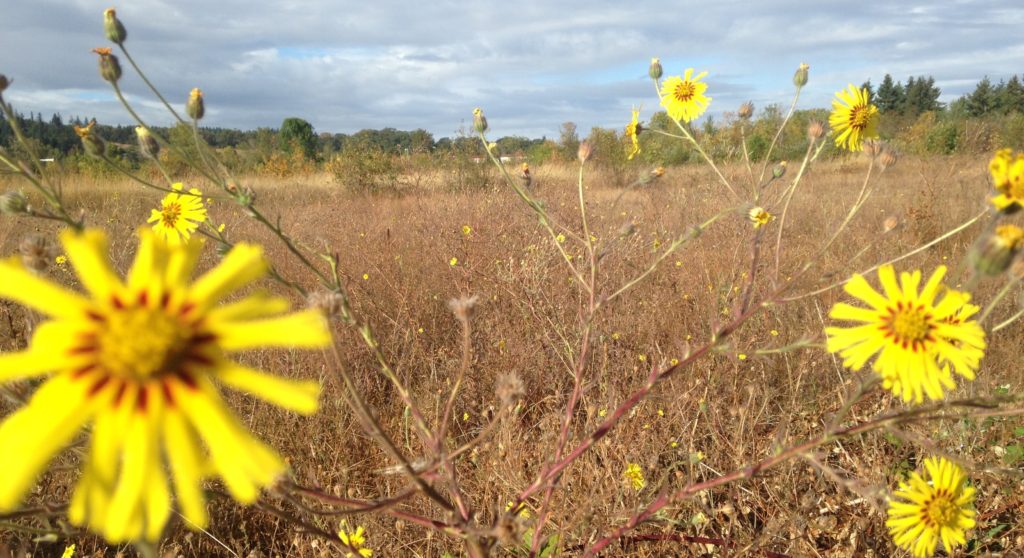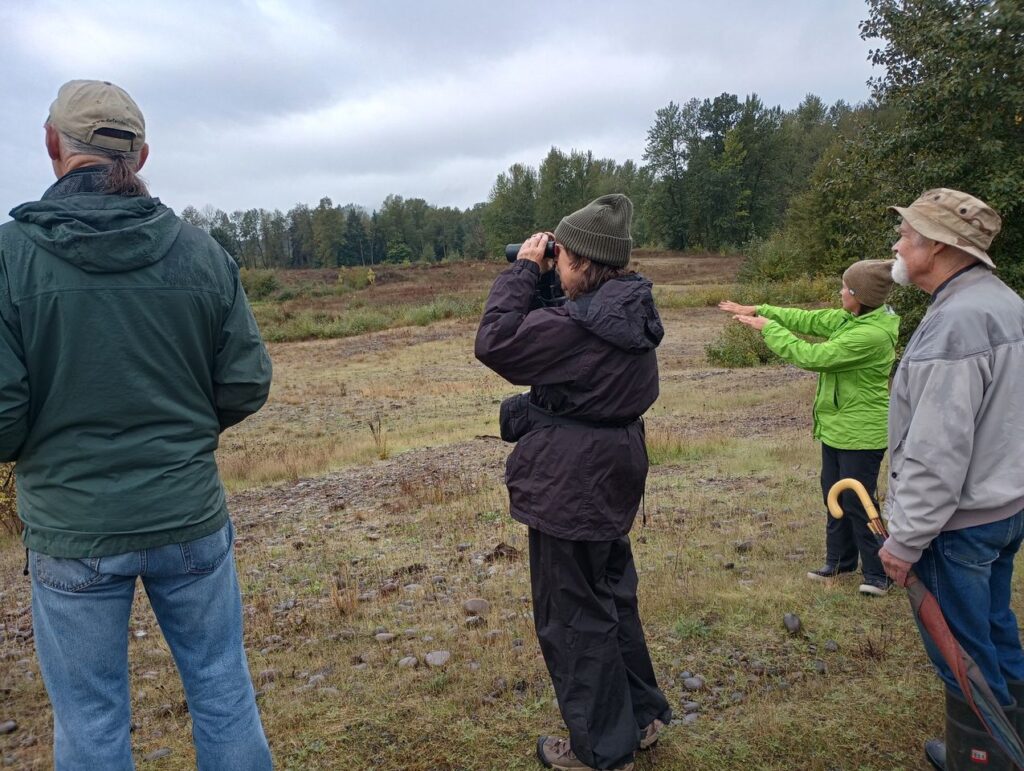History
We are tomorrow’s past.
Mary Webb, English novelist and poet
It is important to remember that our actions today make a difference tomorrow.

Kalapuya
The Kalapuya have lived in the mosaic of wetlands, oak savannas, and forested riparian areas of the Willamette Valley for at least 10,000 years. As the earliest stewards and managers of this land, they have cultivated the wetlands through traditional fire ecology to maintain wet prairie and oak habitats for native species. They rely on plants that grow in the open prairie—such as camas, tarweed, and yampah—as important sources of food.
Early Euro-American Settlers
Starting in the mid-1800s, European colonizers began reshaping the Willamette Valley and its surrounding habitats to meet their needs. Wetlands were drained and filled for agricultural land, often for grazing livestock, and the use of fire as a landscape management tool was suppressed. Continuous prairie habitats and vegetation patterns were fragmented by the expansion of farms and the impact of grazing. Invasive plants and animals were introduced, both intentionally and inadvertently. The reduction of wetlands decreased flood water storage capacity, while the channelization of streams and removal of trees altered stream structure and habitat. Oak savannas vanished, replaced by Douglas firs and shrubby understory species. The open and productive hills and the forests near rivers were transformed into the landscape we see today.
The Challenge
In response to growing recognition of the importance of wetlands and oak savannas as critical habitats, the Federal Clean Water Act was expanded in 1972 to provide greater protection for America’s threatened wetlands. In 1987, around 1,500 acres of wetlands were identified in west Eugene, with over a third of these wetlands located on land proposed for future industrial development. Concerned citizens in the Eugene community urged policymakers to reconsider the city’s industrial expansion, as the cumulative impact could further erode this already rare wetland system.
Soon after, species protected under the Endangered Species Act (ESA) were discovered, beginning with the rediscovery of the Fender’s Blue butterfly. Like many butterflies, the Fender’s blue has a specialized relationship with a specific host plant. From the time a Fender’s caterpillar hatches in early summer until it emerges as an adult butterfly the following spring, the host plant—almost always Kincaid’s lupine—provides its sole source of food and shelter.
The challenge was to create a solution that balanced environmental protection, recreation, and urban development while complying with state and federal laws and regulations. All stakeholders—government agencies, developers, landowners, and community members—became involved in finding a solution to this complex issue.
Creating our Network
Collaboration and cooperation became the foundation of the West Eugene Wetlands initiative, resulting in the formation of the West Eugene Wetlands Partnership. This partnership began with the City of Eugene, the U.S. Bureau of Land Management, The Nature Conservancy, the U.S. Army Corps of Engineers, and the Oregon Youth Conservation Corps. In 2001, the Willamette Resources & Educational Network (WREN) was created to lead education and outreach efforts. The combined resources of federal, state, and local agencies worked together to address the challenge of protecting wetlands while allowing for the expansion of Eugene. This was made possible through a policy of mitigation banking, which identified the highest quality land in Eugene for preservation, enhancement, restoration, or creation (PERC) to offset adverse impacts to similar wetland ecosystems.
The West Eugene Wetlands Today
Today, the West Eugene Wetlands Partnership has expanded and merged into the Rivers to Ridges (R2R) Partnership, a coalition of 17 organizations working to improve the quality of life for residents of the Willamette Valley. R2R’s mission is to protect and enhance the region’s land and water resources, value landscapes for their ecosystem functions, and provide environmental education and outdoor recreation opportunities. Together, these partners have protected over 4,000 acres—roughly six square miles—of wet prairie and oak upland prairie/savanna habitat in west Eugene.
Less than one percent of the original critical habitats of the Willamette Valley remain today. These wet prairies are home to hundreds of plant and animal species, including the federally endangered Fender’s Blue butterfly, Kincaid’s lupine, and the Willamette daisy. Thanks to the ongoing conservation efforts of local partners, Bradshaw’s lomatium has been delisted from the endangered species list, which is exactly what the wetland protection program was designed to accomplish. We look forward to continuing this important work–in collaboration with our many partners–for years to come.

